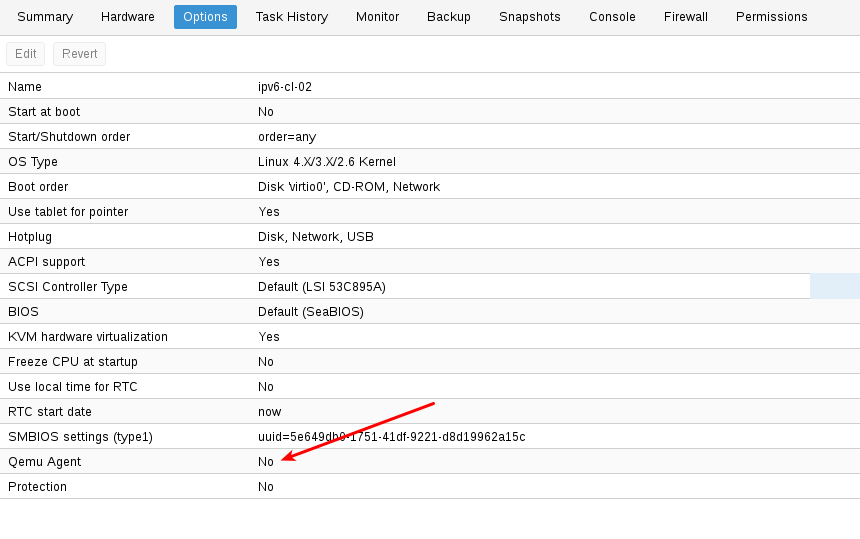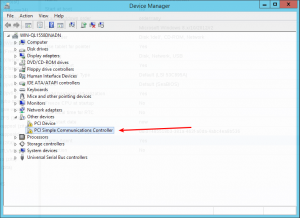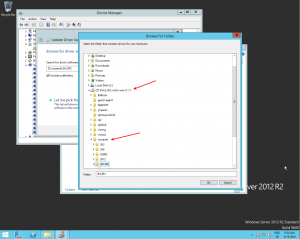Difference between revisions of "Qemu-guest-agent"
(→Host) |
A.lauterer (talk | contribs) (add hint about Services control panel for windows) |
||
| (17 intermediate revisions by 8 users not shown) | |||
| Line 18: | Line 18: | ||
or via CLI: | or via CLI: | ||
| − | qm set VMID -agent 1 | + | qm set VMID --agent 1 |
=== Guest === | === Guest === | ||
| Line 35: | Line 35: | ||
yum install qemu-guest-agent | yum install qemu-guest-agent | ||
| + | |||
| + | Depending on the distribution, the guest agent might not start automatically after the installation. | ||
| + | |||
| + | Start it either directly with | ||
| + | |||
| + | systemctl start qemu-guest-agent | ||
| + | |||
| + | (should work for most distributions) or reboot the guest. | ||
==== Windows ==== | ==== Windows ==== | ||
| − | + | [[File:screen-vioserial-device-manager.png|thumb]] [[File:screen-vioserial-driver.png|thumb]] | |
First you have to download the virtio-win driver iso (see [[Windows VirtIO Drivers]]). | First you have to download the virtio-win driver iso (see [[Windows VirtIO Drivers]]). | ||
| Line 43: | Line 51: | ||
# Attach the ISO to your windows VM (virtio-*.iso) | # Attach the ISO to your windows VM (virtio-*.iso) | ||
# Go to the windows Device Manager | # Go to the windows Device Manager | ||
| − | # Look for "PCI Simple Communications Controller" | + | # Look for "PCI Simple Communications Controller" |
| − | # Right Click -> Update Driver and select on the mounted iso in DRIVE:\vioserial\<OSVERSION>\ where <OSVERSION> is your Windows Version (e.g. 2k12R2 for Windows 2012 R2) | + | # Right Click -> Update Driver and select on the mounted iso in DRIVE:\vioserial\<OSVERSION>\ where <OSVERSION> is your Windows Version (e.g. 2k12R2 for Windows 2012 R2) |
After that, you have to install the qemu-guest-agent: | After that, you have to install the qemu-guest-agent: | ||
# Go to the mounted ISO in explorer | # Go to the mounted ISO in explorer | ||
| − | # Execute the installer with double click (either qemu-ga- | + | # The guest agent installer is in the directory '''guest-agent''' |
| + | # Execute the installer with double click (either '''qemu-ga-x86_64.msi''' (64-bit) or '''qemu-ga-i386.msi''' (32-bit) | ||
| + | |||
| + | After that the qemu-guest-agent should be up and running. You can validate this in the list of Window Services, or in a PowerShell with: | ||
| + | |||
| + | <pre> | ||
| + | PS C:\Users\Administrator> Get-Service QEMU-GA | ||
| + | |||
| + | Status Name DisplayName | ||
| + | ------ ---- ----------- | ||
| + | Running QEMU-GA QEMU Guest Agent | ||
| + | |||
| + | </pre> | ||
| + | |||
| + | If it is not running, you can use the '''Services''' control panel to start it and make sure that it will start automatically on the next boot. | ||
| + | |||
| + | === Testing that the communication with the guest agent is working === | ||
| + | |||
| + | The communication with the guest agent takes place over a unix socket located in /var/run/qemu-server/<my_vmid>.qga | ||
| + | You can test the communication qm agent: | ||
| + | |||
| + | qm agent <vmid> ping | ||
| − | + | if the qemu-guest-agent is correctly runnning in the VM, it will return without an error message. | |
== See Also == | == See Also == | ||
| − | http://wiki.qemu.org/Features | + | http://wiki.qemu.org/Features/GuestAgent |
[[Category: HOWTO]] [[Category: Installation]] | [[Category: HOWTO]] [[Category: Installation]] | ||
Revision as of 07:21, 18 May 2020
Introduction - What is qemu-guest-agent
The qemu-guest-agent is a helper daemon, which is installed in the guest. It is used to exchange information between the host and guest, and to execute command in the guest.
In Proxmox VE, the qemu-guest-agent is used for mainly two things:
- To properly shutdown the guest, instead of relying on ACPI commands or windows policies
- To freeze the guest file system when making a backup (on windows, use the volume shadow copy service VSS).
Installation
Host
You have to enable the guest-agent per VM, either set it in the GUI to "Yes" under options (see screenshot):
or via CLI:
qm set VMID --agent 1
Guest
Linux
On Linux you have to simply install the qemu-guest-agent, please refer to the documentation of your system.
We show here the commands for Debian/Ubuntu and Redhat based systems:
on Debian/Ubuntu based systems (with apt-get) run:
apt-get install qemu-guest-agent
and on Redhat based systems (with yum):
yum install qemu-guest-agent
Depending on the distribution, the guest agent might not start automatically after the installation.
Start it either directly with
systemctl start qemu-guest-agent
(should work for most distributions) or reboot the guest.
Windows
First you have to download the virtio-win driver iso (see Windows VirtIO Drivers).
Then install the virtio-serial driver:
- Attach the ISO to your windows VM (virtio-*.iso)
- Go to the windows Device Manager
- Look for "PCI Simple Communications Controller"
- Right Click -> Update Driver and select on the mounted iso in DRIVE:\vioserial\<OSVERSION>\ where <OSVERSION> is your Windows Version (e.g. 2k12R2 for Windows 2012 R2)
After that, you have to install the qemu-guest-agent:
- Go to the mounted ISO in explorer
- The guest agent installer is in the directory guest-agent
- Execute the installer with double click (either qemu-ga-x86_64.msi (64-bit) or qemu-ga-i386.msi (32-bit)
After that the qemu-guest-agent should be up and running. You can validate this in the list of Window Services, or in a PowerShell with:
PS C:\Users\Administrator> Get-Service QEMU-GA Status Name DisplayName ------ ---- ----------- Running QEMU-GA QEMU Guest Agent
If it is not running, you can use the Services control panel to start it and make sure that it will start automatically on the next boot.
Testing that the communication with the guest agent is working
The communication with the guest agent takes place over a unix socket located in /var/run/qemu-server/<my_vmid>.qga You can test the communication qm agent:
qm agent <vmid> ping
if the qemu-guest-agent is correctly runnning in the VM, it will return without an error message.


